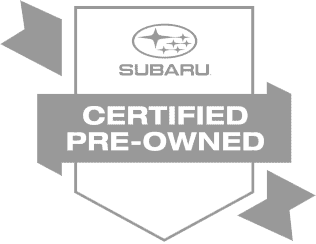

The BOXER® engine inside your Subaru is an astonishing piece of engineering, so it makes sense that you'd want to get the most out of it. Decades ago, drivers would regularly bring their cars in for a tune-up to keep the engine at its best. While modern engines don't require regular tune-ups in the same way that old engines did, there are still some steps you should take to help your BOXER® engine stays in good health for years to come.

6. Beware of Sediment In Gasoline
Though gasoline is one of the elements your engine needs to run, sediment in gas could damage the engine. That's why your Subaru has a fuel filter. When the time comes to replace this filter, don't put the service off; it's doing the important work of keeping your engine clean and healthy. It's also a good idea to always keep your gas tank at least 1/4 of the way full. Failing to do so often means the fuel filter expires sooner, and that can lead to a variety of larger problems including a drop in fuel economy.

5. Replace the Engine Air Filter
Air is another thing that your engine needs for the combustion process, and this filter makes sure that dirt, dust, pollen, and other sediment stay out while fresh, clean air gets in. As you can imagine, it gets clogged over time. While this is unlikely to do any lasting harm to your engine, it may cause both the gas mileage and the power to decrease as your engine gets less and less air. If the filter is clogged enough, your engine may even have a hard time running at all.
4. Inspect the Cooling System
The cooling system is what keeps the engine from overheating, so keeping an eye on it is important. In addition to checking coolant levels (more on that below), there are a number of other components you can check. Radiator hoses move coolant through the system. Check these for cracks or bulges visually and by running your fingers along them and squeezing the spot near the clamps when your engine is cold. While you're at it, take a look at the serpentine belt. Among other things, this component drives the water pump, which is an important part of making the entire cooling system to work.

3. Check the Fluids
Two of the most important engine-related fluids you can check on your own are the coolant and the engine oil. To check the coolant, locate the reservoir. It should be translucent, with a minimum and maximum fill lines. Simply check the coolant level to make sure that it falls between these two lines. Checking the oil is a bit more in-depth, as it involves using a dipstick. Remove the dipstick from the engine, and then wipe it down with a rag or paper towel. Re-insert it and then pull it out again. Take a look at the oil level. If it's' above the minimum line, your oil levels are good. Don't forget to replace the dipstick when you're done!
2. Change Oil Regularly
Even if your oil levels are good, you should still change your engine oil regularly. This fluid keeps the moving parts of the engine lubricated so they don't damage themselves. Over time, oil will break down and become less effective. If you go a bit too long without changing oil, you may not notice much--but your engine's lifespan may be affected. If you go far too long, the engine itself may be damaged beyond repair. A good rule of thumb is that you should change the oil every 3,000 miles if you're using conventional oil. However, synthetic oil in a new engine can last much longer.
1. Always Pay Attention To Warning Signals
An overheating engine. A Check Engine Light. An Oil Pressure Light. Smoke coming out of your vehicle's tailpipe. There are a number of warnings that your engine may send out, and the worst thing you can do is ignore them. Getting troubling signs checked out immediately may mean that you catch them before they can become even worse. Ignoring them could spell disaster for your engine.
Capitol Subaru of Salem
920 Auto Group Ave NE
Salem, OR 97301
- Sales: 503-587-5500
- Service: 503-587-5500
- Parts: 503-587-5500







